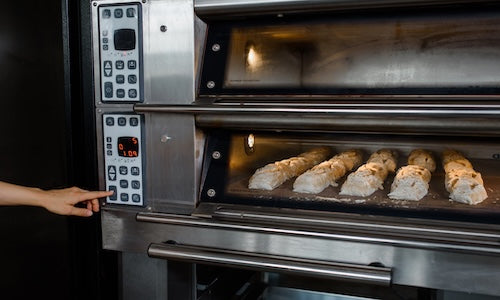
When following baking recipes from around the world, you’ll often find oven temperatures listed in different formats — Celsius, Fahrenheit, or gas mark settings. Understanding how to convert between these units, and how fan (convection) ovens differ from conventional ones, can help you achieve perfect baking results every time.
Let’s explore the basics of oven temperature conversions, types of ovens, and recommended cooking temperatures for different foods.
1. Understanding Oven Types
Before diving into temperature charts, it’s important to know what kind of oven you’re using. Oven type affects both temperature accuracy and baking results.
Conventional Oven
A conventional oven uses upper and lower heating elements but does not have a fan. This means heat can be unevenly distributed, so dishes placed on the top or bottom racks may bake differently.
Convection (Fan) Oven
A convection or fan oven uses a built-in fan to circulate hot air evenly throughout the oven cavity. This makes baking faster and more efficient, often giving food a crispier finish.
If a recipe specifies 180°C with fan, you should increase the temperature by about 20°C (or 25°F) when using a standard (non-fan) oven.
In short:
-
180°C fan = 200°C conventional oven
-
350°F convection = 375°F conventional oven
This conversion helps ensure your bakes don’t turn out over- or undercooked when switching oven types.
2. Oven Temperature Conversion Chart (Celsius, Fahrenheit, Gas Mark, Fan Oven)
Here’s a quick reference guide for converting oven temperatures across the most common units:

Tip: When switching between oven types, adjust by ±20°C (±25°F) to match convection and conventional heating.
3. Common Oven Temperature Ranges

Different foods require different temperature zones. Here’s a general guide to help you select the best temperature based on what you’re cooking:
For Meats and Seafood
-
Salmon or white fish: 180–200°C (356–392°F)
-
Shrimp: 190°C (374°F)
-
Squid: 220°C (428°F)
-
Chicken wings: 180°C (356°F)
-
Chicken breast: 210°C (410°F)
-
Steak: 180°C (356°F)
For Pastries and Baked Goods
-
Sponge cake: 200°C (392°F)
-
Puff pastry: 210°C (410°F)
-
Macarons: 190°C (374°F)
-
Cookies: 190–200°C (374–392°F)
-
Cheesecake: 190°C (374°F)
-
Scones: 200°C (392°F)
-
Toasted bread: 180°C (356°F)
For Vegetables
-
Garlic cloves: 210°C (410°F)
-
Sausages: 220°C (428°F)
These are reference ranges — always check your recipe for precise timing and temperature adjustments depending on your oven type.
4. Types of Ovens Explained
Ovens come in many designs and functions. Here’s a breakdown of common household oven categories:
By Size
-
Small ovens (10–20L): Heat up quickly, ideal for 1–3 people or simple baking.
-
Medium ovens (20–40L): Suitable for 3–5 person households; require more space and ventilation.
-
Large ovens (40L+): Usually built-in types, perfect for families and frequent baking.
By Function
-
Standard oven: Heats via upper and lower elements. Basic but reliable for most baking.
-
Air fry oven: Combines convection baking with air frying. Circulates hot air for crispy textures with less oil.
-
Steam oven / microwave-steam combo: Integrates steaming to keep food moist during baking — great for bread and fish.
-
Smart oven: Allows app or voice control to monitor and adjust temperature remotely.
-
Self-cleaning oven: Uses heat or steam cycles to loosen baked-on food residue.
5. Oven Components and Design
A modern oven typically includes:
-
Outer shell: Usually made of cold-rolled steel with insulation to prevent heat loss.
-
Controller: Can be mechanical (simple knobs) or digital (precise temperature control).
-
Viewing glass: Double-layered designs improve heat insulation and safety.
-
Heating elements: Made of stainless steel or quartz tubes, positioned at the top and bottom for even heating.
-
Racks and trays: Multiple layers allow batch baking.
-
Rotisserie rod (in larger ovens): For evenly roasting chicken or meat.
-
Rear fan: Found in convection ovens to maintain consistent air circulation.
Understanding these parts helps you select an oven that suits your cooking style and maintenance preference.
6. Oven Temperature Conversion Tips
-
Always preheat your oven before baking to stabilize internal temperature.
-
Use an oven thermometer to verify accuracy — many home ovens can vary by ±10°C.
-
Rotate trays halfway through baking in conventional ovens for even results.
-
Lower temperature slightly (by 15–20°C) when baking in a convection oven to prevent overbrowning.
Final Thoughts
Oven temperature conversion isn’t just about math — it’s about knowing how heat, air circulation, and cooking style affect your results. Whether you’re roasting meat, baking bread, or preparing delicate pastries, using the right temperature for your oven type ensures consistent, delicious outcomes.

At Chefco, we offer a full range of commercial and home ovens, from convection ovens and steam ovens to air fry and electric models, designed for efficient and precise cooking performance.


